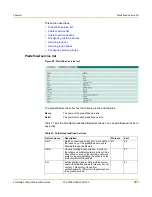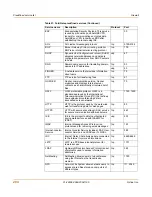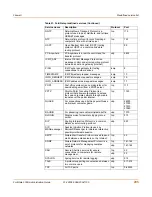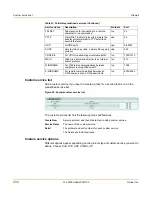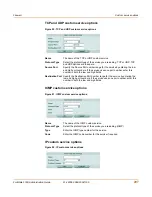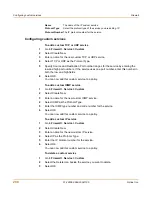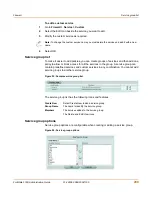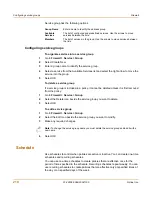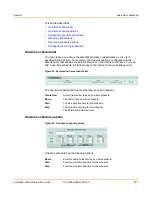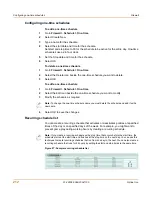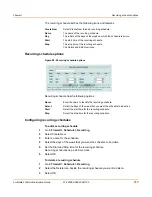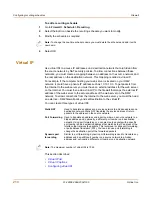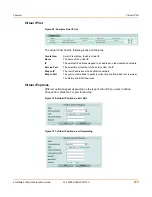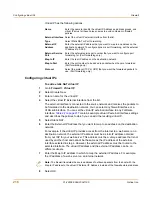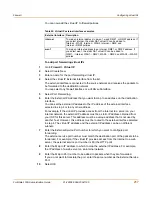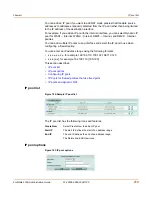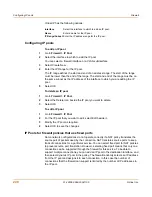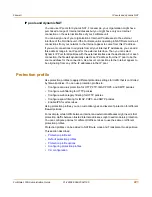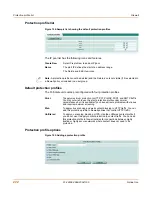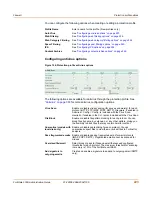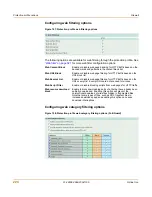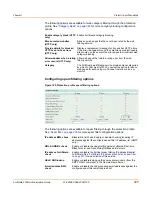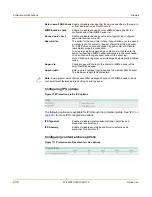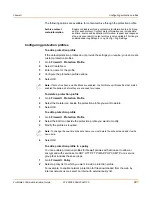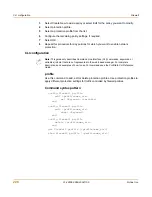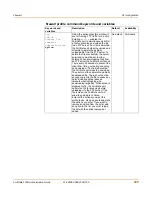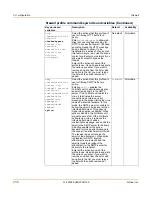
Firewall
Configuring virtual IPs
FortiGate-100A Administration Guide
01-28006-0068-20041105
217
You can now add the virtual IP to firewall policies.
To add port forwarding virtual IPs
1
Go to
Firewall > Virtual IP
.
2
Select Create New.
3
Enter a name for the port forwarding virtual IP.
4
Select the virtual IP External Interface from the list.
The external interface is connected to the source network and receives the packets to
be forwarded to the destination network.
You can select any firewall interface or a VLAN subinterface.
5
Select Port Forwarding.
6
Enter the External IP Address that you want to map to an address on the destination
interface.
You can set the external IP address to the IP address of the external interface
selected in step
4
or to any other address.
For example, if the virtual IP provides access from the Internet to a server on your
internal network, the external IP address must be a static IP address obtained from
your ISP for this server. This address must be a unique address that is not used by
another host. However, this address must be routed to the external interface selected
in step
4
. The virtual IP address and the external IP address can be on different
subnets.
7
Enter the External Service Port number for which you want to configure port
forwarding.
The external service port number must match the destination port of the packets to be
forwarded. For example, if the virtual IP provides access from the Internet to a web
server, the external service port number is 80 (the HTTP port).
8
Enter the Map to IP address to which to map the external IP address. For example,
the IP address of a web server on an internal network.
9
Enter the Map to Port number to be added to packets when they are forwarded.
If you do not want to translate the port, enter the same number as the External Service
Port.
10
Select OK.
Table 22: Virtual IP external interface examples
External Interface Description
internal
To map an internal address to a wan1, wan2, DMZ1, or DMZ2 address. If
you select internal, the static NAT virtual IP can be added to
Internal
->
WAN1, Internal
->
WAN2, Internal
->
DMZ, and
Internal
->
DMZ2 policies.
wan1
To map an Internet address to an internal, DMZ1, or DMZ2 address. If
you select wan1, the static NAT virtual IP can be added to
WAN1
->
Internal, WAN1
->
DMZ1, WAN1
->
DMZ2, and WAN1
->
WAN2
policies.
Summary of Contents for FortiGate FortiGate-100A
Page 24: ...24 01 28006 0068 20041105 Fortinet Inc FortiLog documentation Introduction...
Page 72: ...72 01 28006 0068 20041105 Fortinet Inc Transparent mode VLAN settings System network...
Page 80: ...80 01 28006 0068 20041105 Fortinet Inc DHCP IP MAC binding settings System DHCP...
Page 114: ...114 01 28006 0068 20041105 Fortinet Inc Access profile options System administration...
Page 232: ...232 01 28006 0068 20041105 Fortinet Inc CLI configuration Firewall...
Page 244: ...244 01 28006 0068 20041105 Fortinet Inc peergrp Users and authentication...
Page 320: ...320 01 28006 0068 20041105 Fortinet Inc service smtp Antivirus...
Page 366: ...366 01 28006 0068 20041105 Fortinet Inc syslogd setting Log Report...
Page 380: ...380 01 28006 0068 20041105 Fortinet Inc Glossary...
Page 388: ...388 01 28006 0068 20041105 Fortinet Inc Index...

